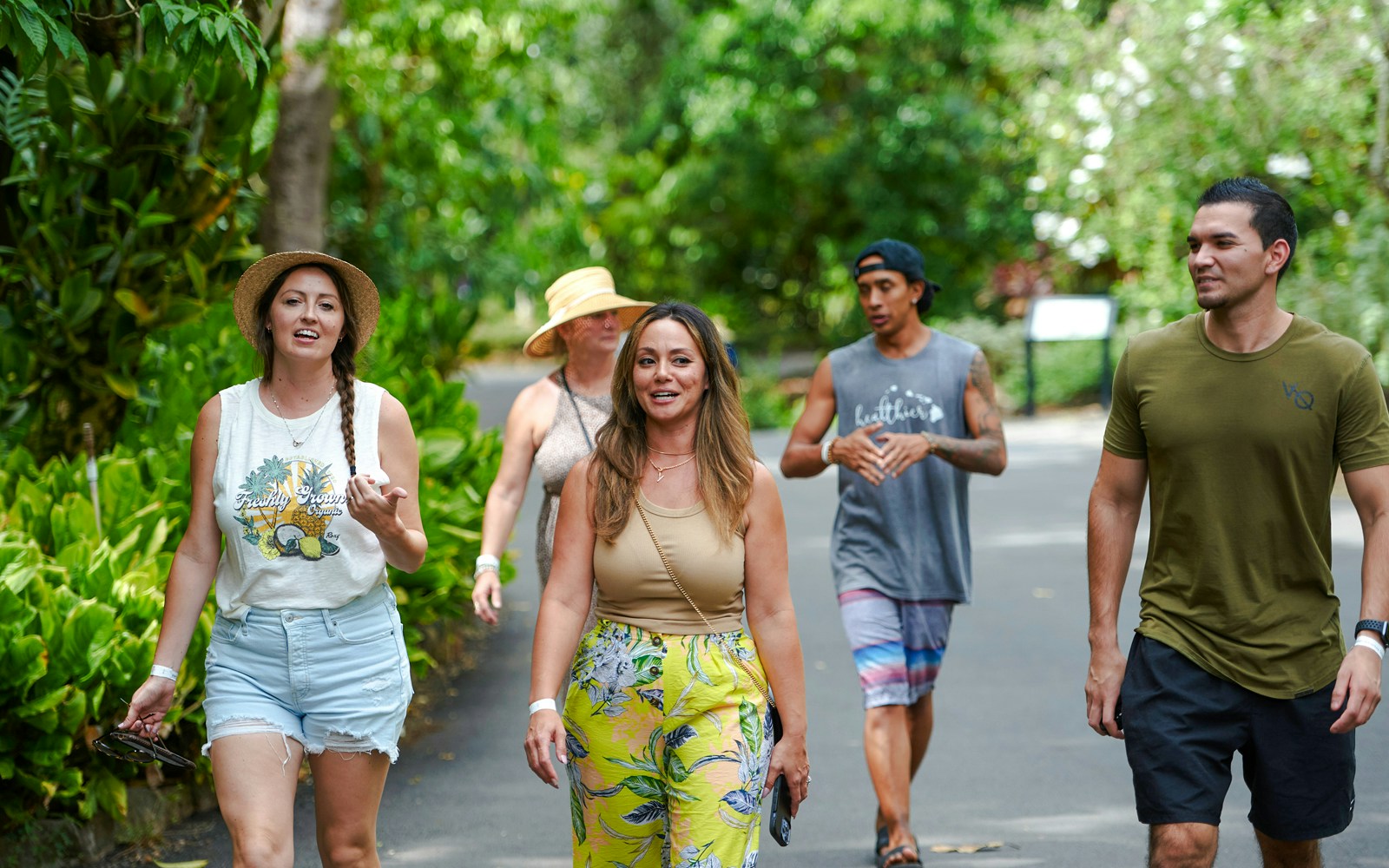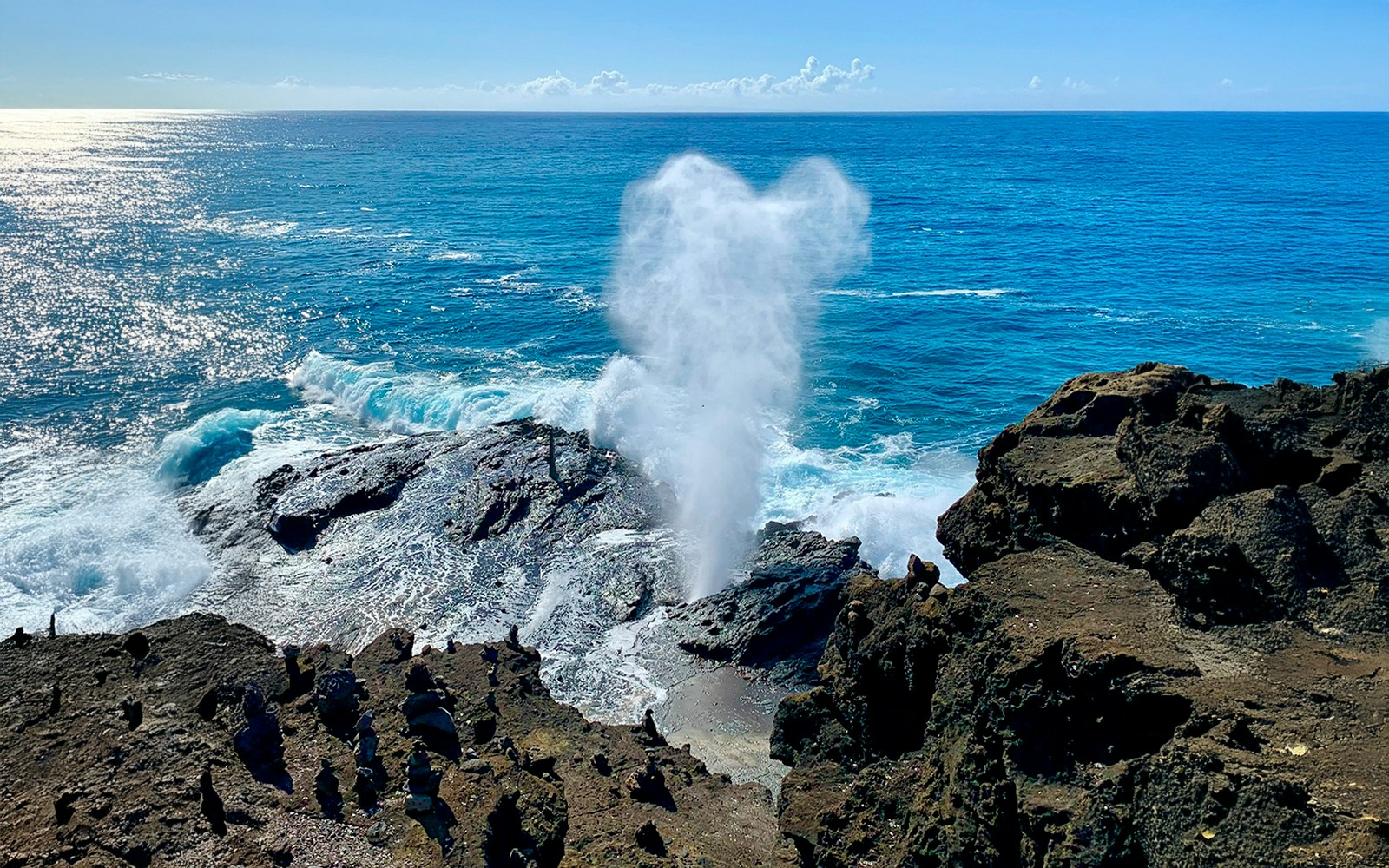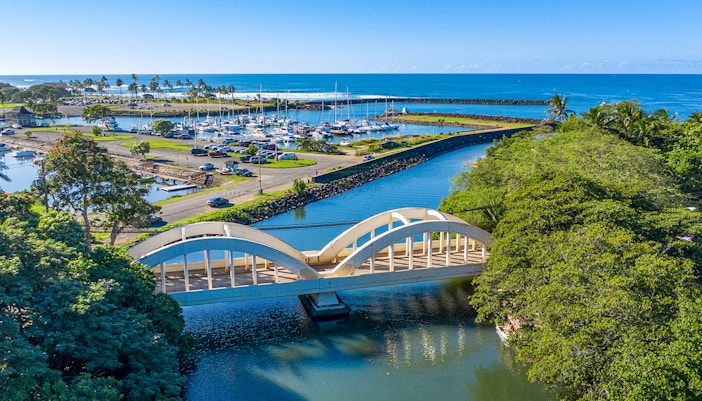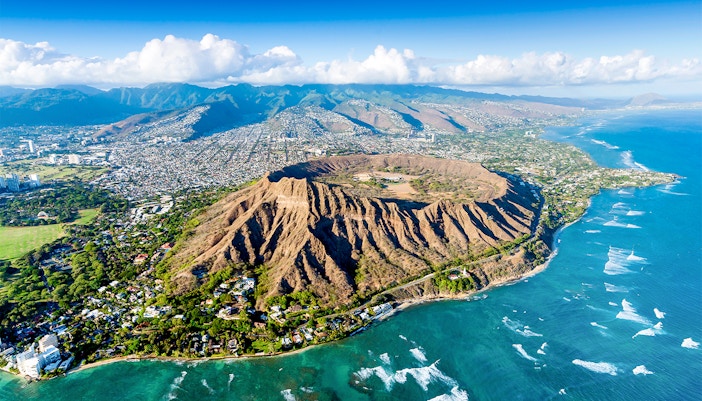Instead of piecing together separate excursions, the Grand Circle Island Tour gives you the ultimate shortcut: all of Oahu’s highlights woven into one seamless adventure. In one sweeping trip, you’ll pass through bustling cityscapes, emerald mountain ranges, quiet fishing villages, and surf towns that feel frozen in time.
Oahu Grand Circle Island tours | A journey around paradise
Quick facts

- Official name: Oahu Grand Circle Island Tour
- Location: Island of Oahu, Hawaii, USA
- Route length: Approx. 120 miles (193 km) around the island
- Duration: Half- or full-day experience (approx. 6.5-10 hours)
- Major highlights: Pearl Harbor, Haleiwa Town, Dole Plantation, USS Arizona Memorial, Nu‘uanu Pali
- Visitors per year: Over 5 million travelers explore Oahu annually
- Best time to visit: Year-round, with drier months from April to October
- Ideal for: First-time visitors, history buffs, families, and explorers wanting to see it all in a single day
Start your Oahu experience
Why take the Grand Circle Island tour?
See the whole island in a day
What you’ll see along the way

Dole Plantation
One of Oahu’s most popular stops, the Dole Plantation is all about pineapples and island agriculture. You can wander through lush gardens, learn how pineapples are grown and harvested, and even watch fun cutting and tasting demos. Of course, the highlight for many is grabbing a cup of the creamy, refreshing Dole Whip.

Haleiwa Town
Haleiwa is the laid-back heart of Oahu’s North Shore. This small surf town blends plantation-era charm with a modern creative vibe. You’ll find colorful shops, local art galleries, and plenty of food spots, from famous shrimp trucks to shave ice stands that are perfect for cooling off.
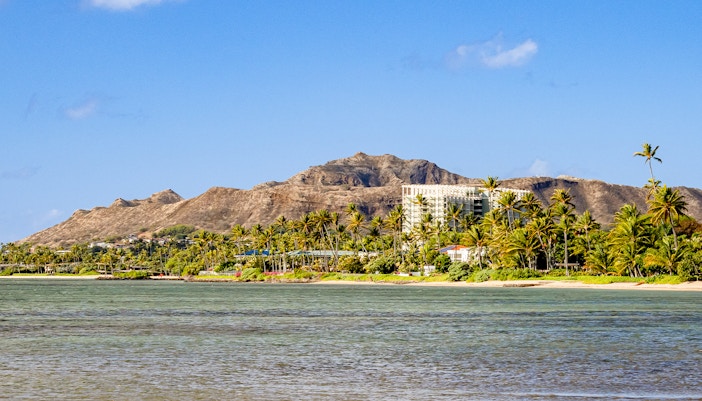
Kahala Coast
The Kahala Coast is a scenic stretch known for its ocean views and luxury homes. It’s the kind of place where sparkling blue water meets upscale neighborhoods, and hearing a few local legends from your guide adds to the experience.
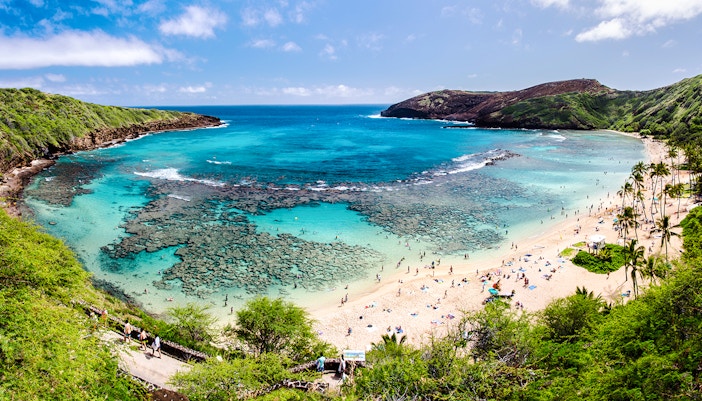
Hanauma Bay
This protected marine sanctuary is one of Oahu’s natural gems. Nestled inside a volcanic crater, Hanauma Bay is famous for its crystal-clear waters and abundant marine life. Even just passing by, its turquoise colors stand out as something special.
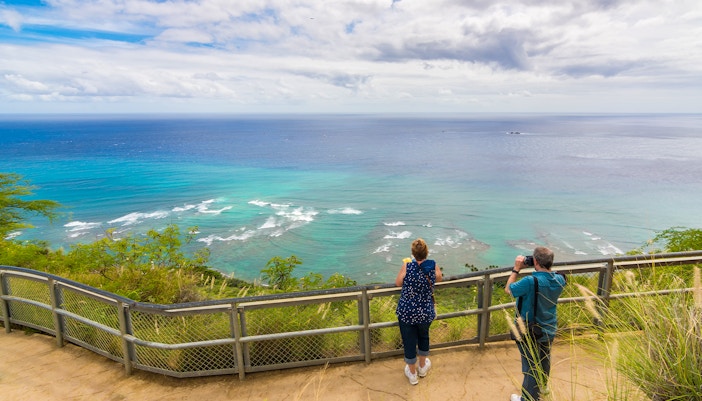
Diamond Head lookout
Diamond Head lookout offers some of the best views on the island. From this point, you can take in Waikiki, the Pacific Ocean, and the iconic volcanic crater itself. It’s a spot where you’ll want your camera ready, but it’s just as nice to simply pause and enjoy the scenery.

Halona Blowhole
The Halona Blowhole is a natural wonder that always draws a crowd. When waves crash into the lava rock below, they shoot up through an underwater tube, creating a geyser-like spray. Depending on the tide, it can be a dramatic burst or a gentle puff of mist; either way, it’s fascinating to watch.

North Shore Beaches
The beaches along Oahu’s North Shore are legendary. In winter, they’re home to massive waves and professional surf competitions; in summer, the waters are calm, inviting, and great for swimming. Whether you’re into surfing or just want to take in the view, these beaches are a must-see.
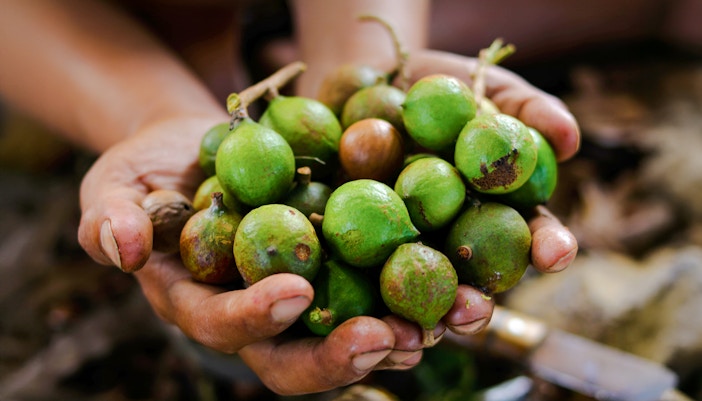
Macadamia Nut Farm
A visit to a macadamia nut farm is as tasty as it is fun. You’ll get to sample Hawaii’s favorite crunchy snack in different flavors, from sweet to savory. It’s a quick stop that gives you a flavor of the islands.

Nuʻuanu Pali lookout
The Nuʻuanu Pali lookout is one of those places that leaves you speechless. From here, you’ll see sweeping views of Oahu’s Windward Coast framed by lush cliffs. It’s also a historic site, tied to the 1795 battle where King Kamehameha I united the Hawaiian Islands.

Downtown Honolulu
Driving through Downtown Honolulu gives you a peek into the island’s cultural and political heart. You’ll pass landmarks like ʻIolani Palace, the Hawaii State Capitol, and the King Kamehameha Statue, each with its own story to tell about Hawaii’s history.

Pearl Harbor Visitor Center
At the Pearl Harbor Visitor Center, history comes to life through exhibits, displays, and memorials. It’s a place where you can better understand the events of December 7, 1941, and reflect on a moment that shaped the world.

USS Arizona Memorial
A short Navy shuttle boat takes you across the harbor to the USS Arizona Memorial. Standing over the sunken battleship is a solemn experience, giving you space to honor the lives lost and pay quiet tribute.

Green World Coffee Farm
For a lighter stop, Green World Coffee Farm is all about local flavor. You can sample fresh Hawaiian coffee, sip on a smoothie, or grab a pastry before heading back on the road. It’s a cozy, energizing pause in the day.
Key regions of Oahu

Honolulu & Waikiki
Located on the island’s south shore, Honolulu is Hawaii’s capital and cultural hub. Waikiki, its beachfront neighborhood, is famous for high-rise resorts, shopping, and iconic Diamond Head views. Top highlights include Waikiki Beach, ʻIolani Palace, and the bustling dining and nightlife scene.

North Shore
Stretching across Oahu’s northern coast, the North Shore is legendary for big-wave surfing in winter and calm, swim-friendly waters in summer. Haleiwa Town offers boutique shopping and local eats, while Waimea Bay and Sunset Beach draw surf fans from around the world.

Windward Coast
East-facing Oahu is lush, green, and more relaxed than the city. This side is home to Kailua Beach, Lanikai’s turquoise waters, and dramatic mountain backdrops. Scenic spots like Nuʻuanu Pali Lookout and Hanauma Bay make the Windward Coast a must for nature lovers.

Leeward Coast
On the drier west side of Oahu, you’ll find sunny beaches, golf courses, and family resorts like Ko Olina. This area is less crowded but offers great snorkeling, dolphin-watching cruises, and local cultural attractions, including Hawaiian luaus.

Central Oahu
Nestled between the island’s two mountain ranges, Central Oahu is rich with history and agriculture. It’s home to Pearl Harbor and the USS Arizona Memorial, plus the Dole Plantation with its pineapple fields and gardens. The area connects Honolulu to the North Shore.
Native flora of the island
The marine life of Oahu
Birds & wildlife you’ll see
Explore more in the region

Experience Oahu’s best luaus
Immerse yourself in Hawaiian culture at top luaus like Toa Luau in Waimea Valley, Paradise Cove in Ko Olina, and Chief’s Luau in Waikiki. Expect traditional ceremonies, fire-knife dancing, beachfront feasts, and cultural activities.
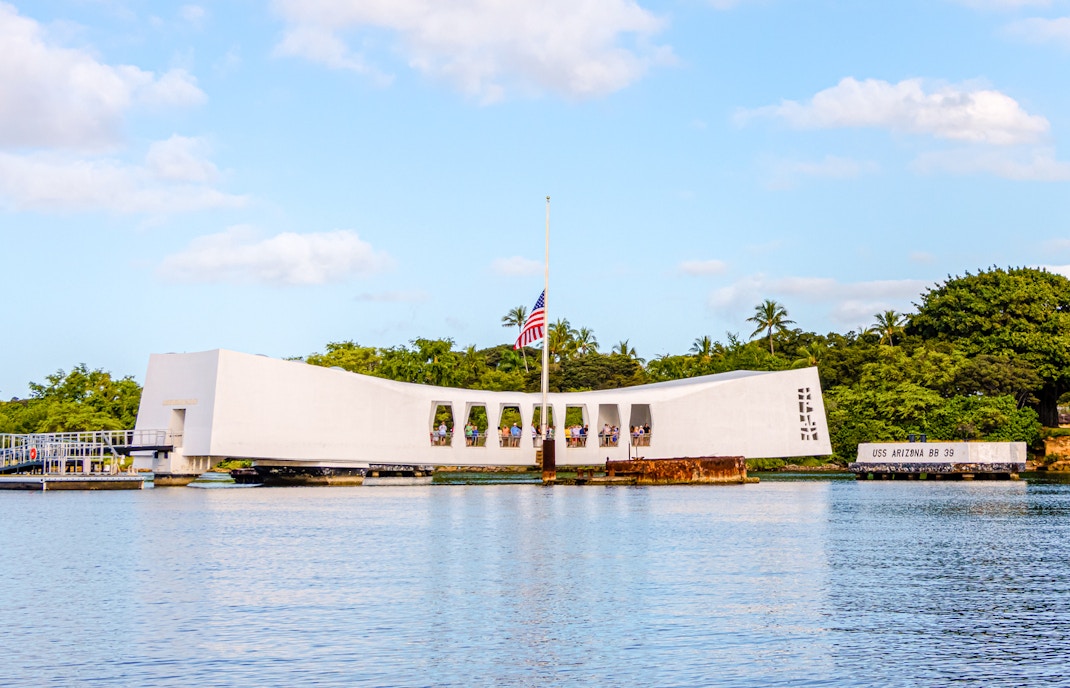
Dive deeper into Pearl Harbor
Beyond the USS Arizona Memorial, explore more of Pearl Harbor at the USS Missouri Battleship, USS Bowfin Submarine Museum, and the Pearl Harbor Aviation Museum. Each site offers a unique perspective on WWII history.
Frequently asked questions about Grand Circle Island tours of Oahu
Many travelers overlook the lush Waimea Valley on the North Shore. It’s a peaceful oasis with waterfalls, botanical gardens, and cultural sites that give you a quiet break from the busier beaches.
Yes, Sunrise at Diamond Head lookout and sunset along the Kahala or North Shore coastlines are spectacular. The soft light makes photos magical and the crowds smaller.
Absolutely, Oahu is steeped in Hawaiian mythology, from the moʻo (lizard spirits) of waterfalls to tales of surf gods at Waimea Bay. Guides often share these stories during tours, adding a cultural layer to your visit.
Yes, Oahu is generally safe, and many attractions can be enjoyed solo. Just stay on marked trails, follow safety signs at beaches, and check weather conditions during the rainy season.
Oahu was formed by volcanic activity, with craters like Diamond Head and lava flows shaping the coastline. The island’s mix of cliffs, reefs, and valleys tells the story of millions of years of volcanic and erosive forces.
Yes, you will! Year-round, look for Hawaiian green sea turtles, monk seals, and seabirds, and spot migrating humpback whales from December to April.
Start your tour early, visit lesser-known North Shore beaches, or stop at attractions during off-peak hours. Express or combo tours often help you skip long waits at popular spots.
Winter (Dec–Feb) brings big waves to the North Shore, perfect for watching surfers. Some beach swimming spots may be rough, but it’s also whale season, making wildlife sightings more likely.
Many overlook Halona Blowhole, a fascinating natural formation where ocean water shoots through lava tubes. Even if you just snap photos from the lookout, it’s worth a stop.
Many attractions, including Pearl Harbor, Diamond Head lookout (partial), and major beaches, are wheelchair accessible. Some hiking trails or natural lookouts may have limited access, so it’s best to check in advance.

